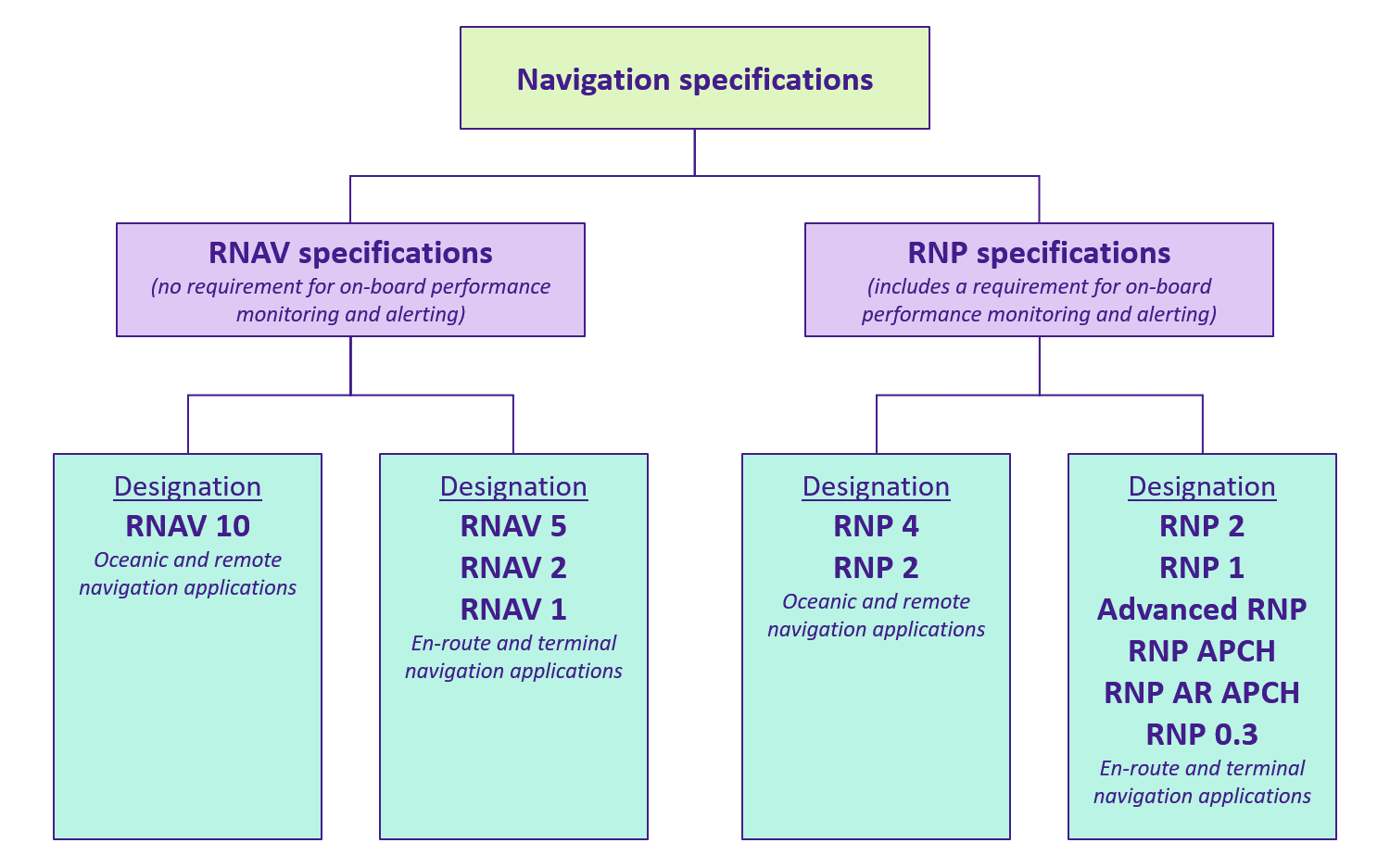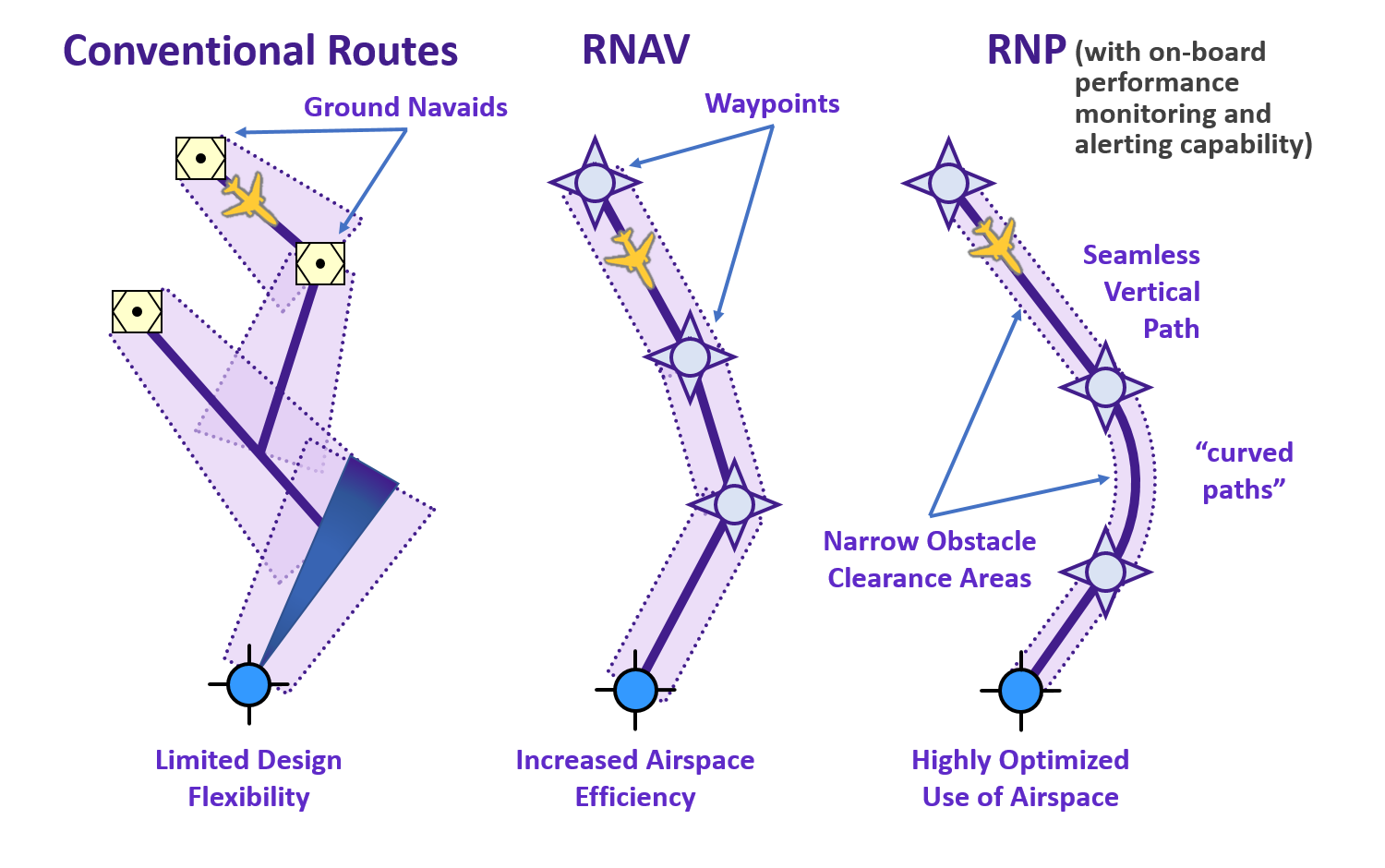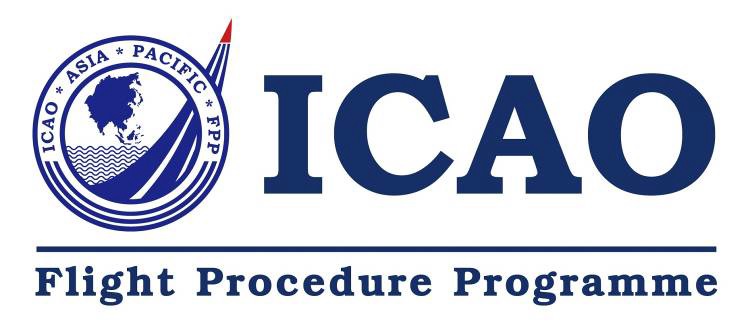PBN Implementation
What is Performance-based Navigation (PBN)?
PBN is a framework for defining performance requirements for aircraft operating along an air route, on an instrument approach or in a designated airspace. Through the application of Area Navigation (RNAV) and Required Navigation Performance (RNP) specifications, PBN provides a basis for the design and implementation of automated, optimized and environmentally friendly flight paths as well as an enabler for efficient airspace design and refined protection against terrain.

PBN Navigation Specification
RNAV and RNP
RNAV enables aircraft to fly on any desired flight path within the coverage of ground- or space-based navigation aids, within the limits of the capability of the self-contained systems, or a combination of both capabilities. As such, RNAV-equipped aircraft have better access and flexibility for point-to-point operations.
RNP is RNAV with the addition of an on-board performance monitoring and alerting capability. A defining characteristic of RNP operations is the ability of the aircraft navigation system to monitor the navigation performance it achieves and inform the crew if the requirement is not met during an operation. This onboard monitoring and alerting capability enhances the pilot's situational awareness and can enable reduced obstacle clearance or closer route spacing without intervention by air traffic control.
Certain RNP operations require advanced features of the onboard navigation function and approved training and crew procedures. These operations must receive approvals that are characterized as RNP Authorization Required (RNP AR) Operations.
The illustrations below depict the constraints associated with conventional, ground-based sensor specific routes/procedures and the flexibility and benefits of performance-based, non-sensor specific navigation (both RNAV and RNP).
Once the required performance level is established, the capability of the different aircraft determines whether it can safely achieve the specified performance and qualify for the operation.

RNAV and RNP
Support to ICAO Asia-Pacific Flight Procedure Programme (FPP)
The ICAO Asia-Pacific (APAC) FPP has been established since 2010 with the objective of assisting APAC members to develop their own capabilities in instrument flight procedure (IFP) design and to accelerate the implementation of Performance-based Navigation (PBN). This is achieved by providing training courses and workshops, on-the-job training, assistance with quality assurance and procedure design processes, consultation services and access to IFP-related automation solutions. The Hong Kong Special Administrative Region (HKSAR) has been one of the Active Participating Members since the establishment of APAC FPP and has been contributing by providing expertise and financial support.

ICAO FPP
CAD had seconded two experienced flight procedure designers to the APAC FPP Office as the Chief Instrument Flight Procedure Design Instructors to launch the new office in 2010. In collaboration with the Hong Kong International Aviation Academy (HKIAA), FPP organised the Procedure Design Refresher Course in Hong Kong in May 2018 which was delivered by experts from the CAD as guest instructors. This was the first time that a FPP training course was conducted outside Beijing. The contribution demonstrated the CAD's continued commitment in supporting the development of sustainable capability in IFP and implementation of PBN in the Asia Pacific region, and fostering Hong Kong as an international aviation training hub.
PBN Implementation in Hong Kong
| Date | PBN Implementation Project |
|---|---|
| RNAV Route M750 | |
| Implementation of RNAV (GNSS) SIDs in Hong Kong Terminal Control Area (TMA) | |
| Implementation of RNP AR approach procedures for Runway 07L and Runway 25R | |
| Implementation of Noise Mitigating RNAV SIDs using Radius-to-Fix (RF) Turn | |
| Implementation of Hong Kong Basic-RNP1 SIDs and STARs | |
| Implementation of Basic-RNP 1 SIDs/STARs in Hong Kong Terminal Control Area (TMA) for flights operating at Macau International Airport | |
| Implementation of RNP AR (Authorization Required) Approaches and Associated STARs at HKIA | |
| Designation of PBN Routes L642 and M771 as RNP 4 | |
| RNP AR Approach for Runway 07L/R (North Circuit) Trial Run | |
| RNP AR Approach for Runway 07L/R (North Circuit) | |
| Withdrawal of Conventional SID/STAR (non-RNAV) from routine use | |
| PBN Departure and Approach Procedure for VHSS | |
| GBAS Trial at HKIA | |
| Revised ILS Runway 07L/R Approach Procedures based on PBN Transition at HKIA | |
| Rationalization of RNP Approach Chart Identification | |
| Instrument Approach Procedures, Standard Instrument Departures (SIDs) and Standard Instrument Arrivals (STARs) for the New North Runway of HKIA |

